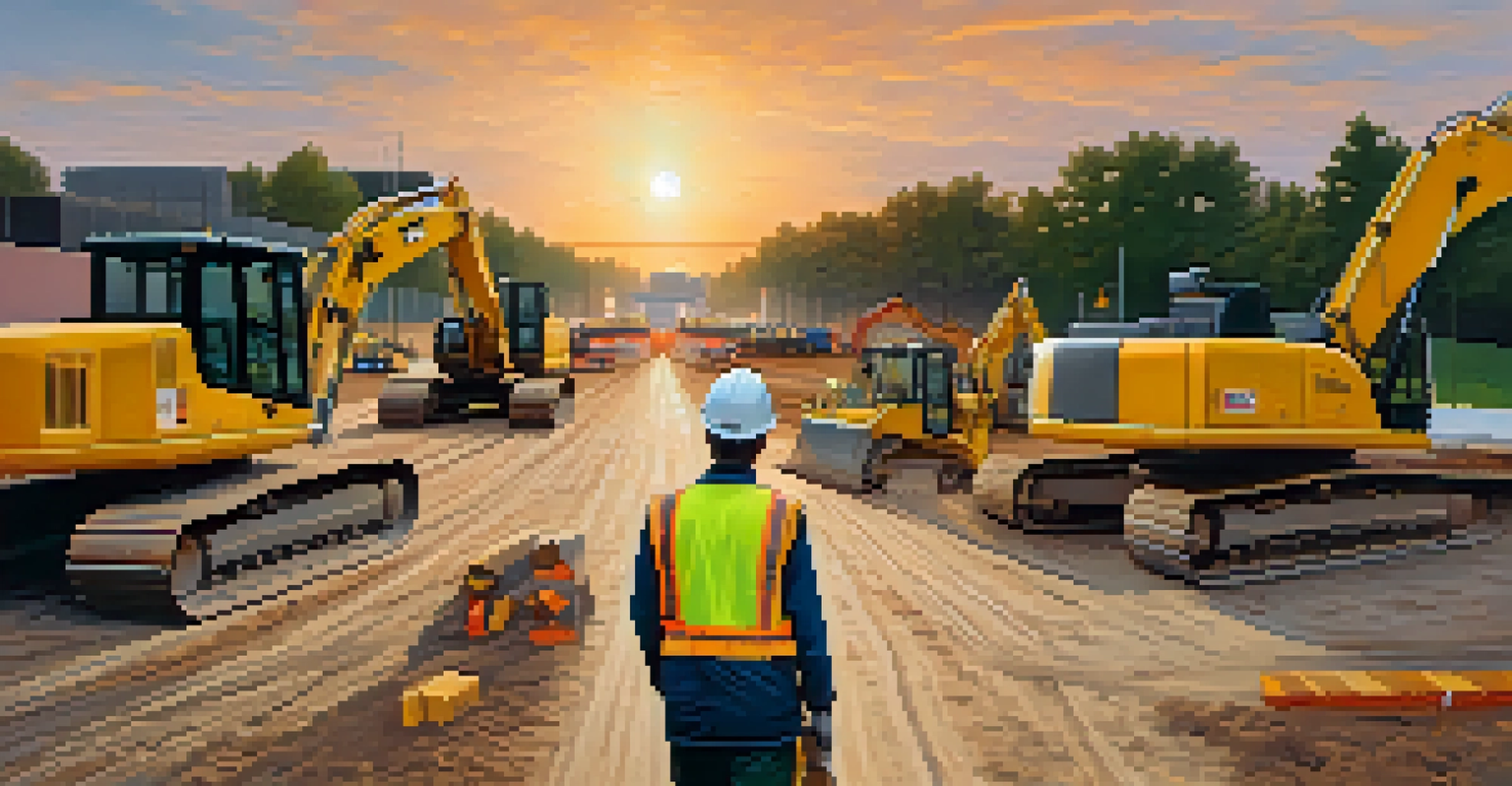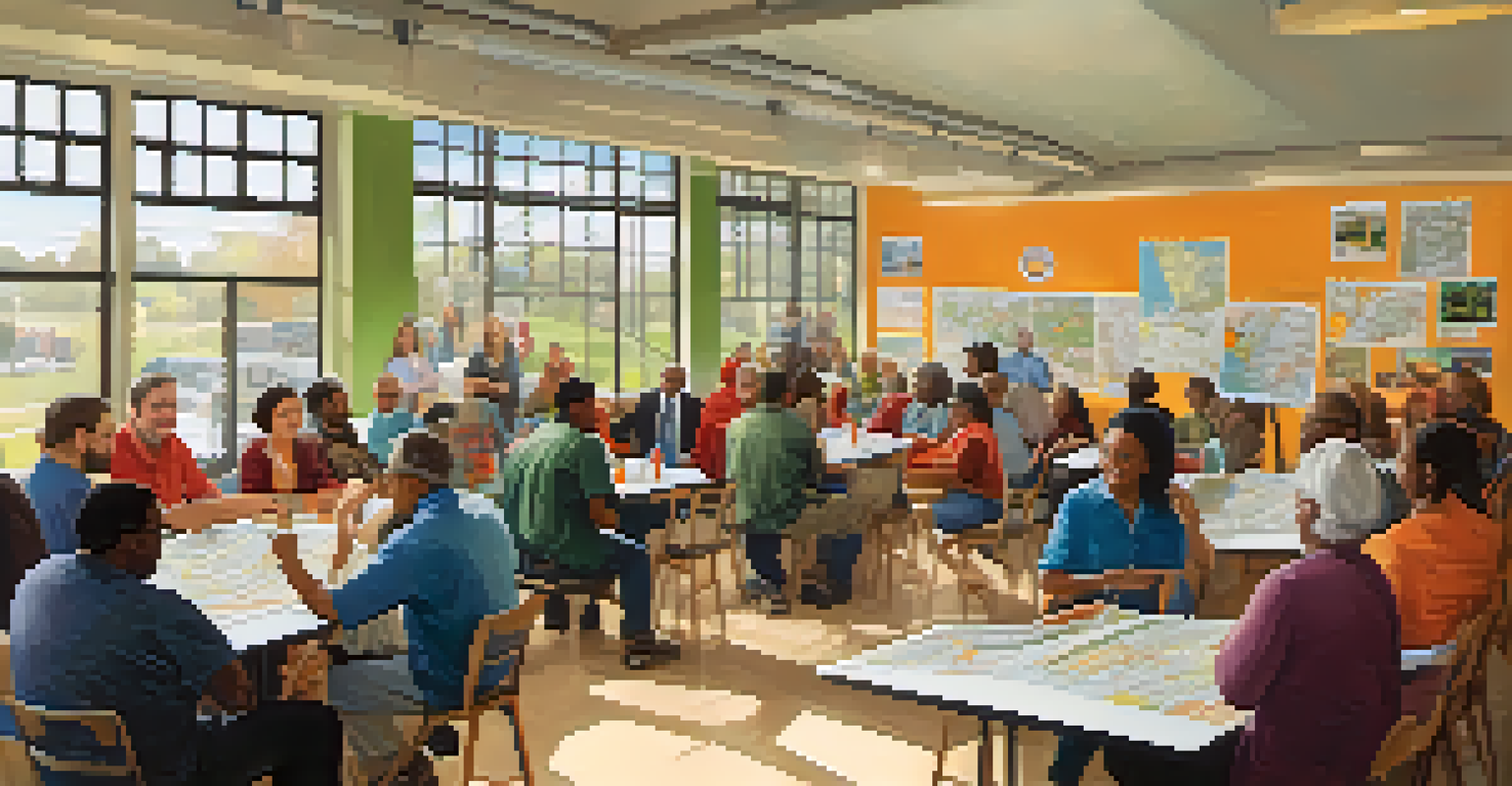Road Infrastructure in Raleigh: An Overview of Current Projects

The Importance of Road Infrastructure in Raleigh
Raleigh's road infrastructure plays a crucial role in the city's growth and connectivity. As the capital of North Carolina, it supports not just local traffic but also regional travel for commuters and goods. A well-maintained road system can boost economic development, making it easier for businesses to thrive.
The road to success is always under construction.
Moreover, efficient transportation networks enhance quality of life for residents. They reduce commute times and provide better access to essential services like healthcare and education. As Raleigh continues to expand, the need for a robust infrastructure becomes even more pressing.
Investing in road infrastructure is not just about paving roads; it's about building a future. By prioritizing these projects, Raleigh aims to create a more sustainable and accessible environment for everyone, ensuring that growth is not just rapid but also responsible.
Current Major Road Projects in Raleigh
Several key road projects are currently underway in Raleigh, aimed at improving traffic flow and safety. Notable among these is the expansion of I-540, which will accommodate increasing traffic volumes and reduce congestion. This expansion is vital for facilitating smoother commutes for residents and visitors alike.

Another significant project is the implementation of the New Bern Avenue Bus Rapid Transit (BRT) line. This project will enhance public transportation options, making it easier for residents to access jobs and services without relying on personal vehicles. It's a step toward more sustainable urban mobility in Raleigh.
Raleigh's Infrastructure Fuels Growth
The city's road infrastructure is crucial for economic development and enhances the quality of life for residents.
Additionally, the city is focusing on upgrading pedestrian and cycling infrastructure. Projects that include dedicated bike lanes and improved sidewalks will encourage healthier modes of transportation, promoting a more active lifestyle among residents. These initiatives reflect Raleigh's commitment to a balanced transportation ecosystem.
Challenges Facing Road Infrastructure Development
While Raleigh is making strides in road infrastructure, several challenges remain. Funding is a primary concern, as the cost of these projects can be substantial. Balancing budgets while ensuring quality and safety can lead to tough decisions for city planners and stakeholders.
Infrastructure is the backbone of any community, allowing people and goods to move efficiently and effectively.
Furthermore, construction disruptions can affect daily life for residents and businesses. Road closures and detours, although necessary for progress, can result in frustration and delays. Clear communication from the city about these projects is essential to help the community navigate through these changes.
Lastly, environmental considerations play a significant role in planning new road projects. Raleigh is committed to minimizing ecological impact while developing its infrastructure. Striking a balance between growth and sustainability is a challenge that the city must navigate carefully.
Community Involvement in Infrastructure Projects
Community input is vital for the success of road infrastructure projects in Raleigh. The city often holds public forums and workshops to gather feedback from residents about their needs and concerns. This collaborative approach ensures that projects align with the community's interests.
Engaging the community not only fosters a sense of ownership but also helps identify potential issues before they arise. When residents feel heard, they are more likely to support the initiatives, leading to smoother implementation. It's a win-win situation for both the city and its inhabitants.
Community Involvement is Essential
Engaging residents in the planning process ensures that infrastructure projects align with community needs and foster support.
Moreover, involving local organizations and advocacy groups can provide additional insights. These stakeholders often represent diverse viewpoints, enriching the planning process with various perspectives. Such collaboration can lead to more innovative and inclusive infrastructure solutions.
The Role of Technology in Road Infrastructure
Technology is transforming how cities approach road infrastructure, and Raleigh is no exception. Innovations like smart traffic lights and real-time traffic monitoring systems are being integrated to manage congestion more effectively. These technologies help streamline traffic flow and reduce waiting times for drivers.
Additionally, the use of data analytics allows the city to make informed decisions about where improvements are needed the most. By analyzing traffic patterns and accident reports, planners can prioritize projects that will have the greatest impact on safety and efficiency.
Furthermore, technology plays a crucial role in enhancing public transportation. Mobile apps providing real-time bus schedules and route information are becoming increasingly popular, empowering residents to make smarter travel choices. This integration of technology supports a more connected and efficient transportation network.
Future Prospects for Raleigh's Road Infrastructure
The future of Raleigh's road infrastructure looks promising, with several visionary projects on the horizon. As the city continues to grow, plans for additional road expansions and improvements are being discussed. These plans aim to accommodate not just the current population but also future residents and businesses.
Moreover, the city is committed to sustainability, with a focus on integrating green spaces and eco-friendly materials into new projects. This approach not only enhances the aesthetic appeal of roadways but also promotes environmental responsibility, aligning with broader city goals.
Technology Enhances Road Efficiency
Innovations like smart traffic systems and data analytics are improving traffic management and public transportation in Raleigh.
Finally, ongoing collaboration with state and federal agencies will be crucial for securing funding and support. By working together, Raleigh can ensure that its road infrastructure meets the needs of its growing population while remaining safe and efficient for all users.
Conclusion: A Roadmap for Raleigh's Growth
In conclusion, Raleigh's commitment to improving its road infrastructure is a testament to its dedication to growth and community well-being. The current and future projects not only aim to enhance transportation but also foster economic development and sustainability. By prioritizing these initiatives, Raleigh is laying the groundwork for a vibrant urban environment.
As the city navigates challenges like funding and community engagement, it remains focused on a collaborative approach. Involving residents in the planning process ensures that the infrastructure reflects the needs and desires of the community, making it a shared endeavor.

Ultimately, Raleigh's road infrastructure projects are more than just construction efforts; they are a roadmap to a brighter future. With thoughtful planning and execution, Raleigh is poised to become an even more accessible and thriving city for generations to come.